Classification of light sources. Part 1. Incandescent lamps and halogen lamps
Three main methods of light production are distinguished: thermal radiation, gas discharge at low and high pressure.
Thermal radiation... Heating of the wire when passing the electric current to the highest possible temperature. The tungsten element with the highest melting point among metals (3683 K) is best suited for this. Example: Incandescent bulbs and incandescent halogen bulbs.
Gas discharge... In a closed glass vessel filled with inert gases, metal vapors and rare earth elements, an arc discharge occurs when voltage is applied. The resulting luminescence of gaseous fillers gives the desired color of light.
Example: mercury, metal chloride and sodium lamps.
Luminescent process... Under the action of an electric discharge, mercury vapor pumped into the glass tube begins to emit invisible ultraviolet rays, which, falling on the phosphor deposited on the inner surface of the glass, turn into visible light. Example: fluorescent lamps, compact fluorescent lamps, light emitting diodes (LED).Different types of lamps differ in such parameters as luminous efficiency, spectral characteristics (eg color rendering), electrical characteristics (operating voltage, power consumption), design characteristics (dimensions), service life and price.
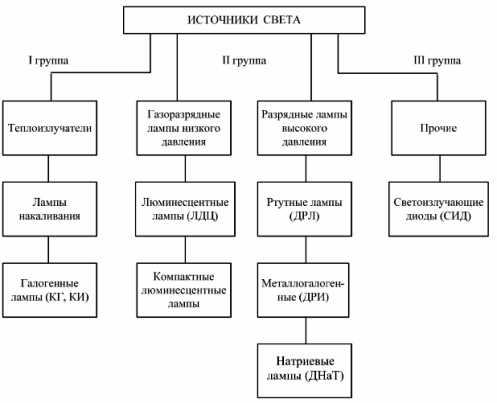
Classification of the light source
Incandescent lamps
Incandescent lamps are typical emitters of heat. In their sealed flask, filled with a vacuum or inert gas, the tungsten coil is heated to a high temperature (about 2600-3000 K) under the action of an electric current, as a result of which heat and light are released. Most of this radiation is in the infrared range.
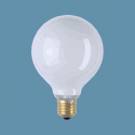 The main types of incandescent lamps are general purpose lamps, special purpose lamps, decorative lamps and reflector lamps.
The main types of incandescent lamps are general purpose lamps, special purpose lamps, decorative lamps and reflector lamps.
Luminous efficiency of incandescent lamps in the range from 25 to 1000 W is approximately 9 to 19 lm / W for lamps with an average service life of 1000 hours. The majority of incandescent lamps are intended for indoor and outdoor lighting in alternating current networks with a nominal voltage of 220 V, 127 V and a frequency of 50 Hz.
Incandescent lamps differ in wattage and bulb type. Incandescent lamps are produced in the classic spherical shape, as well as in smaller sizes with a bulb of the "Mushroom" and "Candle" shapes. The transparent lamps emit a beautiful, rich light, and the light-diffusing coating ensures an even distribution of light and eliminates the effect of glare.Lamps are produced that are adapted to network voltage fluctuations, designed for increased voltage (230-240 V) (when the network voltage increases by 10%, the service life of ordinary lamps is reduced by 3 times), which allows them to keep their technical characteristics longer. The duration of burning of incandescent lamps at normal voltage is not less than 1000 hours, for lamps with a voltage of 127-135 V — 2500 hours, for MO lamps — 700 hours.
The main characteristics of incandescent lamps:
1. Manufactured in a wide range, for different powers and voltages and different types, adapted to specific conditions of use
2. Direct connection to the network without additional devices
3. Serviceability (although with sharply changing characteristics) even with significant deviations of the mains voltage from the nominal
4. Slight (about 15%) reduction in luminous flux until the end of the service life
5. Almost complete independence from environmental conditions (up to the ability to work submerged in water), including temperature
6. Compactness
Disadvantages of incandescent lamps: low luminous efficiency, predominance of the yellow-red part of the spectrum in the emission spectrum, limited service life, high dependence of the characteristics of incandescent lamps on the supply voltage (since as the voltage increases, the temperature of the filament rises and, as a result, the light becomes whiter, the luminous flux rapidly increases and slightly slows down the light efficiency, the service life is sharply reduced).
Spectrum of an incandescent lamp:
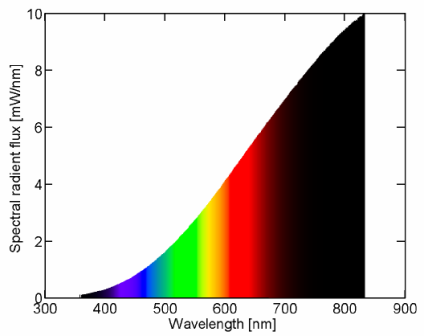
The main characteristics of an incandescent lamp are the nominal values of voltage, power, luminous flux, service life and overall dimensions.
The most common types of filament lamp caps: E — threaded, Bs — single-pin pin, Bd two-pin pin.
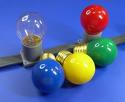 Designation of incandescent lamps: G-gas-filled mono-coil (argon); B — double coil with argon filling; BK — krypton-filled bispiral; MT — matte; 125-135, 220-230, 230-240-voltage range in volts; 25-500 — nominal power in watts; 1 — 12 — distinctive feature of the base model.
Designation of incandescent lamps: G-gas-filled mono-coil (argon); B — double coil with argon filling; BK — krypton-filled bispiral; MT — matte; 125-135, 220-230, 230-240-voltage range in volts; 25-500 — nominal power in watts; 1 — 12 — distinctive feature of the base model.
For example: B 230-240-40-1, MO 36-100
A large number of other types of incandescent lamps are also produced: mine lamps, for the subway, for traffic lights, projection, for photography, miniature and miniature, switching, mirror (lamps-lamps with mirror or diffuse reflective layers in the bulb) and others.
Incandescent halogen lamps
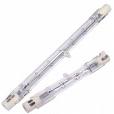 Incandescent halogen lamps are comparable in structure and function to incandescent lamps. But they contain minor additions of halogens (bromine, chlorine, fluorine, iodine) or their compounds in the auxiliary gas. With the help of these additives in a certain temperature range, it is possible to almost completely eliminate the darkening of the bulb (caused by the evaporation of tungsten atoms) and the resulting decrease in luminous flux. Therefore, the size of the bulb in incandescent halogen lamps can be significantly reduced, as a result of which, on the one hand, the pressure in the filling gas can be increased, and on the other hand, it becomes possible to use expensive inert gases krypton and xenon as filling gases.
Incandescent halogen lamps are comparable in structure and function to incandescent lamps. But they contain minor additions of halogens (bromine, chlorine, fluorine, iodine) or their compounds in the auxiliary gas. With the help of these additives in a certain temperature range, it is possible to almost completely eliminate the darkening of the bulb (caused by the evaporation of tungsten atoms) and the resulting decrease in luminous flux. Therefore, the size of the bulb in incandescent halogen lamps can be significantly reduced, as a result of which, on the one hand, the pressure in the filling gas can be increased, and on the other hand, it becomes possible to use expensive inert gases krypton and xenon as filling gases.
Tungsten-halogen cycle.
The main characteristics of an incandescent lamp - luminous efficiency and service life - are mainly determined by the temperature of the coil: the higher the temperature of the coil, the higher the light output, but the shorter the service life. The reduction in service life is a consequence of the rapidly increasing evaporation rate of tungsten with increasing temperature, which leads, on the one hand, to darkening of the bulb, and on the other hand, to burning of the coil.
Blackening of the bulb can be effectively prevented by using a halogen additive to the fill gas, which during the tungsten-halogen cycle prevents the already vaporized tungsten from settling on the walls of the bulb. The tungsten vaporized from the coil during lamp operation enters the temperature range (T1 1400 K) as a result of diffusion or convection and decomposes there again.
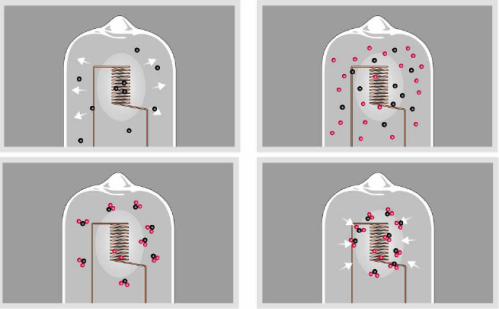
Part of the tungsten is restored again along the spiral, but in a new place. Thus, the normal tungsten-halogen cycle results only in preventing darkening of the bulb, but not in increasing the service life, which will end as a result of the coil breaking on the resulting "hot cells".
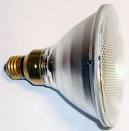 Incandescent halogen lamps are distinguished by their special compactness, significantly whiter light, improved color rendering and double service life.
Incandescent halogen lamps are distinguished by their special compactness, significantly whiter light, improved color rendering and double service life.
Incandescent halogen lamps are available up to 20 kW.
Today, manufacturers offer a huge selection of halogen lamps — for every taste and for different purposes.There are lamps with a power of 5-150 W for a reduced voltage of 12-24 V, as well as a power of 25-250 W (with a single cap with standard E14 and E27 sockets) and 100-500 W (double- with a cap) designed for mains voltage 220-230 V. You can use halogen lamps with external glass reflectors with a special interference coating — it transmits infrared radiation, thus creating a «cold» beam. Lamps with an external aluminum reflector form "deep" (with a scattering angle of 30-100) and "wide" (with a scattering angle of up to 600) light beams.
Here are the main advantages of halogen lamps compared to conventional incandescent lamps:
- higher light efficiency — in some cases it increases to 25 lm / W, which is 2 times higher than that of incandescent lamps;
- great durability - their service life is 2-4 times higher than that of incandescent lamps;
-small dimensions -for low-voltage halogen lamps (12 V, 100 W), the diameter of the bulb is 5 times smaller than that of incandescent lamps of the same power;
— a richer radiation spectrum — halogen lamps have a "whiter" light than incandescent lamps (due to the higher heating temperature — 30,000 K versus 28,000 K for a conventional lamp);
- adjustability of the luminous flux, and at reduced voltage the luminous flux retains sufficient "whiteness".
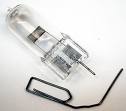 The first two points speak of the obvious economic advantages of halogen lamps: if such a light source is installed instead of a traditional incandescent lamp, but with the same emission parameters, the energy consumption of the light point will be reduced by an average of 20-40%. However, this is not the only advantage of halogen lamps.Their small size, almost miniature, allows the creation of completely new lighting fixtures, for example, the so-called accent lighting — a specially designed reflector system allows such an increase in the light flow that gives designers additional options in the design of the room.
The first two points speak of the obvious economic advantages of halogen lamps: if such a light source is installed instead of a traditional incandescent lamp, but with the same emission parameters, the energy consumption of the light point will be reduced by an average of 20-40%. However, this is not the only advantage of halogen lamps.Their small size, almost miniature, allows the creation of completely new lighting fixtures, for example, the so-called accent lighting — a specially designed reflector system allows such an increase in the light flow that gives designers additional options in the design of the room.
